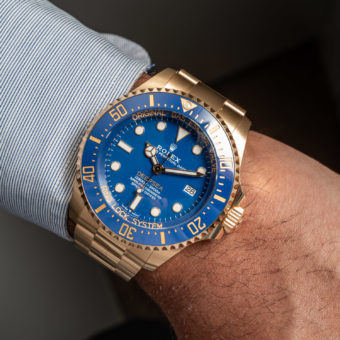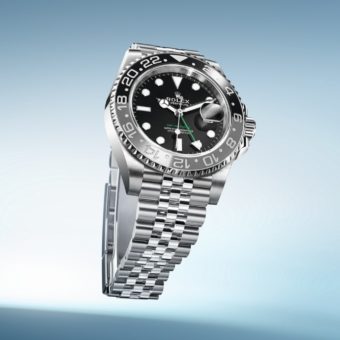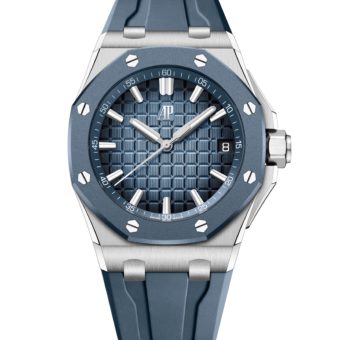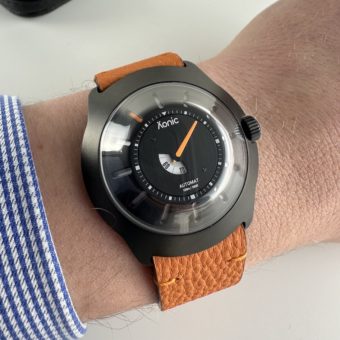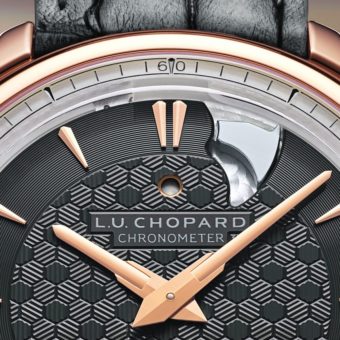
The story of the Armin Strom brand goes back nearly half a century. WatchTime Editor-in-Chief Joe Thompson takes us back in this feature article.In 1967, Armin Strom, a 29-year-old watchmaker who specialized in clock restoration, opened a clock store in the town of Burgdorf, Switzerland, in Canton Bern. He soon branched out into skeletonizing watch movements, paring away material from their bridges and plates until only enough was left to ensure the components would function, then decorating the remaining surfaces with manual engraving.
For nearly two decades, he plied his trade in near anonymity, skeletonizing movements, casing them, and selling them in his store. Then he began casting a wider net. In 1984, he exhibited for the first time at the Basel Fair. In 1990, he won inclusion in the Guinness Book of Records for the world’s smallest hand- skeletonized movement. As the ’90s progressed, word of his skeletonizing prowess spread through the watch industry and he began doing contract work for other watch companies.
In 2006, when Strom was starting to plan his retirement, he approached a friend and customer named Willy Michel about buying his company. Michel was a local businessman; the Michel family owned a pharmaceutical company in Burgdorf. The family bought a 51-percent interest in Strom’s company. Strom retained a 49-percent interest, agreeing to stay on for the time being as head of production and training. Michel put his son, Serge, in charge of the firm, which consisted of little more than Strom himself and two other watchmakers. The Michel family’s goal was to turn Armin Strom into a real watch company, with series production, and to build the Armin Strom brand.

The next year, Serge Michel hired a watchmaker named Claude Greisler to be the company’s technical director. Greisler, like Serge Michel, was born in Burgdorf in 1978. He had studied watchmaking at the École Technique in Le Locle, where he specialized in complications, restoration and construction. When Michel hired him, he was working as a movement designer at Christophe Claret. The first watch the company made under its new ownership was a regulator, skeletonized as an homage to Strom. It contained Caliber ASR07, a modified version of a volume- produced movement. With this watch, the company introduced the Four Elements marketing concept it uses today, in which four different versions of the watch, distinguished by their case materials, are denoted by the labels Air, Fire, Water and Earth.
But Greisler believed that to succeed, the company would have to make its own movements. Customers wanted exclusive movements, not mass-produced ones, but it was hard to find outside suppliers who could furnish them. At first, Serge Michel thought that developing an in-house movement would be too risky: the investment would be large and the return uncertain. But Greisler persevered. He drafted a business plan that eliminated all but the absolutely essential machinery and personnel: a skeleton operation, so to speak. The biggest cost-saving measure was that the movements would be designed in house, by Greisler himself.
Greisler had two other important ideas. First, the company would cover some of the cost of its new machines by charging other watch manufacturers to use them. Second, the various movements – plans called for several different ones − would be designed according to a kind of modular system: some sets of components could be used interchangeably from one caliber to the next. The movements, all in the brand’s portfolio today, are a double-barrel manual-wind one, a single-barrel manual wind, an automatic movement and a tourbillon movement. “We designed a gear train that could be utilized in each of these movements,” Greisler says. “We also planned the hand-setting and winding mechanism for maximum versatility so it could be installed in several different movements. We planned the caliber with twin barrels early on, but we designed its architecture so one barrel could either be eliminated or replaced by a micro-rotor without requiring a lot of labor. We also arranged the construction so a tourbillon could replace the [standard] escapement. The gear train, levers, springs and screws remain mostly identical in each caliber.” The bridges and plates are individually designed for each movement.

are made from the motor block of a Formula 1 car.
Since he was starting from scratch, Greisler was free to design the movements as he saw fit. The team agreed on a round watch with a diameter of 43 mm. They wanted the movement to fill the case, so they decided to make it 37 mm in diameter. Beyond that, they wanted the watch to reflect the spirit of Armin Strom’s 40 years of painstaking labor at the bench. “We wanted to bring Armin Strom’s life work into the present day by creating a new interpretation of skeletonized watches,” Greisler says. “So we asked ourselves: What makes these watches what they are? First, the movement is visible from both the front and the rear. Second, a skeletonized watch has a strongly 3-D character, because you can gaze into the movement. Third, the caliber is manually engraved. We wanted our manufacture watch to include all three elements in a new form.” The watches he envisioned would not actually be skeletonized, but would have open dials and movements designed so you could see inside them. They would be a figurative, rather than literal, tribute to Armin Strom’s skeletonizing skill.

These requirements in mind, Greisler sketched a design for a watch. Michel liked it so much that he asked Greisler to do a complete, finished design. The only precondition was that the styling should be distinctive and contemporary, but not trendy: the team wanted the watches to still look good 10 years later. Greisler says there are advantages to having one person design both watch and movement: there’s no need to coordinate among two or more teams. “I can work on the design and, if technical problems crop up, I can try to solve them through the construction. The whole thing develops in the course of many little steps,” he says. How does such a construction process proceed? The first step is to specify the barrel’s size and position. Afterwards the locations are chosen for the wheels and the escapement subassembly, followed by the winding mechanism and any additional functions (like a date indicator or a power-reserve display). Many sketches are drawn by hand so the designers can tell, for example, how thick each of the wheels needs to be. Afterwards the movement is completely diagrammed by computer so the designers can view 3-D animations of the sequences of motion and make sure everything works properly.
Based on the thickness of a spring and the shape given to it, a computer program can even simulate the component’s strength, speed and degree of metal fatigue. Finally, the tolerances must be specified in order to build the parts for a prototype, which then undergoes thorough testing to determine if any changes are needed before a pilot series can be fabricated.

While this work was underway, the company bought a new, larger building in Bienne, filled it with 3 million Swiss francs’ worth of machines, and hired people to operate them. It moved into the building in 2009. “During the first four months, our machinery produced more shavings than usable components,” Greisler says, “but we’d anticipated that and had included it in our scheduling. There’s simply no alternative to testing and adjusting the machinery on site.”
In one serendipitous instance, a flawed component led to an aesthetic improvement. Greisler had designed the movement with the crown wheels turning on the dial side. To make the gears look more interesting, he skeletonized them. There was one problem: the lathe was producing faulty disks that were domed rather than flat. But Greisler liked them. “They looked like car-wheel rims. We decided to intentionally produce this effect and to give a matching 3-D shape to the wheel spokes.” It only took a little over one year, from the summer of 2008 to November 2009, for Armin Strom to set up its movement-making operation and develop its first in-house movement, the ARM09, which is hand-wound and has a seven-day power reserve. A watch containing the movement, the One Week, was introduced at Baselworld in 2010.

The company set itself a goal of introducing at least one new in-house movement per year. In 2011, it launched an in-house automatic tourbillon movement. (That year, Strom retired. He is still a shareholder in the company.) The next year it brought out a manual-wind, double-barrel tourbillon movement. In 2013 came an automatic movement and, at Baselworld 2014, an automatic with date and a skeletonized version of the first movement, the ARM09. In 2013, Armin Strom made 450 watches, in 35 different references, all with in-house movements and nearly all produced in limited editions of 50 or 100 pieces (the exception is a tourbillon model in the Formula 1-inspired Racing collection, of which just two pieces will be made). They are priced from $10,000 to $130,000. There are eight collections. All but two of them are organized according to the Four Elements principle, with Fire models having rose-gold cases, Earth models PVD-coated steel cases, Air models titanium cases and Water models uncoated steel cases.

The company now employs 22 people. Michel’s plans call for a surge in production over the next five years, to 5,000 pieces per year. To reach that goal, he’ll have to put the same effort into selling watches as he does into making them. “We invested in the manufacture and the product. Now we need investment in marketing and sales,” he says.
This article first appeared in WatchTime Magazine and has since been updated with new information.

